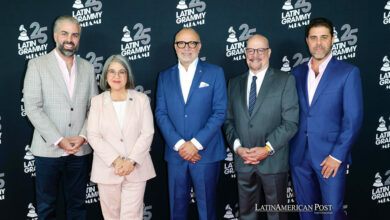Dreams, Dances, and Bodies: Feminist Art as a Bridge Between Argentina and Spain

In a dimly lit gallery at the Museum of Contemporary Art in Buenos Aires (Macba), a standing female figure facing the audience serves as the elemental signifier of the human voice. She narrates dream scenes that contort under the influence of words. Their meanings shift, but the essence remains untouched. This is the intriguing world of “Diario de Sueños,” brought to life by the provocative feminist punk artist Itziar Okariz.
Unveiling Artistic Dialogues: Okariz’s Exploration of Transmission Modes
In recent years, Okariz’s artistic practice has become intricately entwined with art’s transmission modes and pedagogies. Her latest work challenges conventional language regulations and the creation of signifiers that pigeonhole individuals. She utilizes vocal performances, videos, installations, and text pieces to spark discussions around gender norms, delving into the intersections of architecture, territory, the body, rituals, sexuality, and semiotics.
This tantalizing glimpse into the art world is merely a prelude to the 2024-2025 season, scheduled to kick off in March with a lineup of remarkable artists, including the Argentine talent Gonzalo Elvira, the esteemed recipient of the Velázquez and National Visual Arts Awards in Spain, Esther Ferrer, and the Franco-Spanish duo Helena Cabello and Ana Carceler.
Through a collaborative effort between Macba and AECID (Spanish Agency for International Development Cooperation), alongside the Cultural Center of Spain in Buenos Aires, the exhibition “Bailemos Juntas para Sentirnos los Cuerpos” (“Let’s Dance Together to Feel Our Bodies”) will be unveiled.
Javier Martín-Jiménez’s Vision: A Bridge Through “Cuerpo”
The mastermind behind this performative exhibition is the independent curator, cultural manager, and university lecturer Javier Martín-Jiménez. His artistic vision seeks to bridge Spain and Argentina through the embodiment of “cuerpo,” which translates to both “body” and “bridge” in Spanish, emphasizing the interconnectedness of these two nations.
Martín-Jiménez elaborates on his mission: “The core idea revolves around the term ‘cuerpo,’ conceived as an entity in itself, the very material of creation for many artists. Through the exhibitions, we will progressively uncover the body as the measure of all things and an immediate resource for artistic expression.”
The exhibition’s title holds a promise of political critique, challenging the dominant social construct of the human body—a fundamental tenet of universal feminism. Martín-Jiménez says, “Your body belongs to you, and only you can decide what to do with it.”
In this context, he pays homage to the words of Emma Goldman, a mid-20th-century anarchist writer, with her famous quote, “If I can’t dance, I don’t want to be part of your revolution.” This sentiment will echo throughout the displays, featuring photographs, videos, and unique installations.
Unveiling the Body: Martín-Jiménez’s Mission
Martín-Jiménez’s project serves as a platform for shared themes between Argentina and Spain, transcending geographical and temporal barriers. The journey begins with the Patagonian artist Gonzalo Elvira, based in Barcelona, who presents “Celebración y Naufragio” (“Celebration and Shipwreck”).
This imaginative dialogue involves six individuals engaging in a creative reexamination of the legacy of the German Bauhaus School. This tribute maintains the aesthetic and ideological allure of the “House of State Construction” while incorporating subtle ironies and reinterpretations.
In July, the works of Esther Ferrer, a pioneer of performative art in Spain, will take center stage, showcasing her contributions to raising awareness of women’s issues. Two floors of the museum will be adorned with performances, objects, altered photographs, videos, and collages.
Diverse Expressions: Albarracín’s Dialogue with Ferrer
Pilar Albarracín, with her diverse linguistic expressions, will engage in a dialogue with Ferrer, adding another layer of complexity to the exhibition. The program will conclude in December with critical insights into mainstream visual culture by Cabello/Carceller and the participatory work of the young artist Leonor Serrano Rivas.
Martín-Jiménez reflects on the inherently political nature of art, asserting, “Art is always political, a tool for advocacy, preventing neutrality. It should facilitate dialogue and cultivate emancipated, critical spectators, fostering intellectual growth.”
Also read: María García: Latina pionera en producción de eventos de entretenimiento en EE.UU.
As Itziar Okariz continues to describe her dreams—dreams she asserts are “the same as everyone else’s,” perhaps similar to those that once graced the Museum of Contemporary Art in Castilla y León—she underscores the fascinating aspect of dreamscapes and images as shared fictions.
Her performance maintains a dedication to pushing the boundaries of thought, enabling the articulation of concepts. She says, “I produce images, almost like a movie, bypassing written or spoken language scaffolding.” It embodies her “street feminism,” evident in every action, making her unpredictable even to herself.





